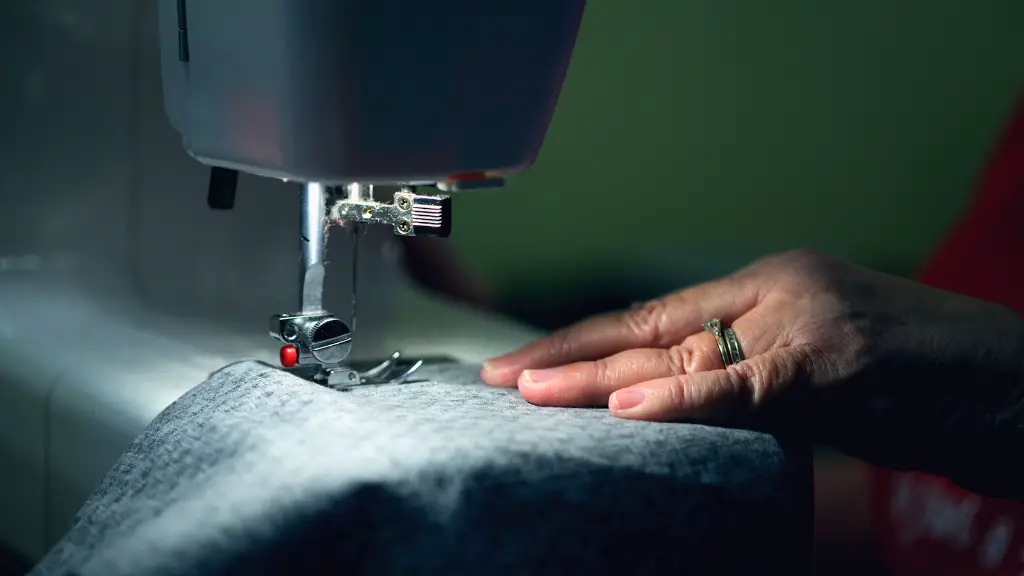Materials Required
When heming a pair of dress pants, you will need the following materials: fabric scissors, a ruler, and either a special tailor’s measure or a fabric marker. You will also need some basic hand embroidery supplies, as well as a piece of thread in a complementary shade to your dress pants.
Alter the Length
First, you’ll need to measure the length of your dress pant legs to determine how much fabric to trim off. Measure from the bottom of the hem to the desired finished length, keeping in mind that you’ll need to account for the extra fabric you’ll add when you re-hem the pants. Once you know how much fabric to cut off, use the ruler to mark out the desired length. Cut off the excess fabric with the scissors.
Now, put the dress pants back on to make sure the desired length is still good for you. Don’t forget to account for the effect of wearing your shoes when deciding the length. If you’re still not happy with the length, you can re-adjust it by trimming additional fabric or by folding the hems as directed below.
Fold the Hem
If you want to create a crisp, finished look to your dress pants, you can use the technique of folding the fabric under instead of hemming it with a thread. Place the pants flat on a table and use the tailor’s measure or fabric marker to mark a line the full width of the fabric at the desired finished length. Hold the ruler along this line and use the fabric scissors to cut off any excess fabric.
You should now have a straight line of fabric which will form the new hem. Now, fold the fabric along this line towards the inside of the pants once and then twice more, so that the raw edges of the fabric are completely hidden. Make sure the folds are even and secure the hem in place with pins.
Secure the Hem
Now, you’ll need to use some hand embroidery to secure the hem. Hold the hem in place and make a small stitch at the top of the fold with the thread. Stitch along the entire width of the fold and make sure the stitches are close together to secure the hem. When you reach the other end, tie the thread off securely.
Now, turn the pants right-side out and press the hem with a hot iron. This will make it smooth and help the stitches to stay in place. You may also want to use a fabric stiffener to help the hem to keep its shape.
Finishing Touches
Finally, you should inspect your work carefully to make sure that everything looks neat and tidy. Check that the hem is even and that the stitches are secure. If there are any imperfections, you can fix them easily with a few more stitches or folds of fabric.
Now, your heming work is complete and you have a pair of dress pant legs that fit perfectly. No sewing machine required!
Further Options
The technique described above is the quickest and simplest way to hem dress pants without a sewing machine. However, if you do have access to a sewing machine and some more advanced sewing skills, you can create much more professional-looking hems. Using this method, you can incorporate a traditional hemming stitch to hold the fabric in place, as well as adding zigzag or decorative stitches, labels, and more.
Fabric Considerations
When you’re hemming dress pants, it’s important to choose the right type of fabric. Fabric that is too thin or too thick can be difficult to hem and may not hold the hem in place. The best material for a hemmed pair of dress pants is a lightweight fabric that won’t fray or stretch easily. Linen, cotton, rayon, and polyester all make good options for a hemmed dress pant.
Care and Maintenance
Once you’ve successfully hemmed a pair of dress pants, you should take good care of them to make sure they last. Regularly inspect them for any loose threads or stitches. If necessary, you can carefully re-stitch any areas that need reinforcement. Additionally, make sure to never machine wash or dry the dress pants, as this could cause the hem to come undone or even ruin the fabric.
Common Mistakes
One of the most important things to remember when hemming dress pants is to measure and mark out your fabric accurately. If you make a mistake when measuring, cutting, and folding the fabric, this can lead to unsightly uneven hems or hems that are too loose or too tight. You should also be careful not to pull on the fabric when making the hem, as this could permanently stretch out the material.
Professional Assistance
If you’re not confident in your ability to hem dress pants, it’s best to seek professional help. Speak to a tailor or seamstress in your area who can help you to get the perfect hem for your dress pants. They will be able to measure the fabric accurately and use specialized tools and techniques to achieve a professional-looking finish.



